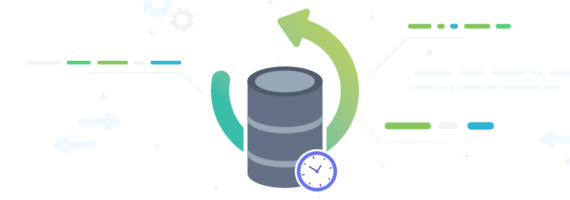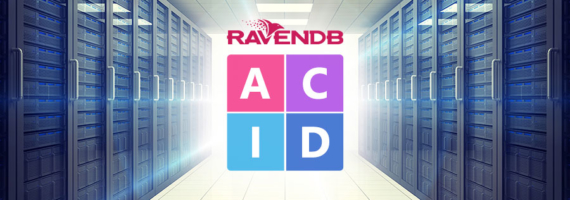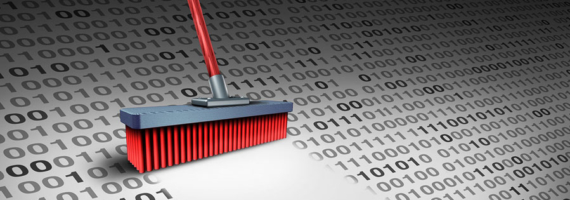Articles, posts and news about data storage.
NOSQL DATABASE DATA STORAGE
Filter by category:
All Series Data Migration Data Storage NoSQL Database Microservice Architecture Database SecurityPlease feel free to browse and read about Data Storage in the articles on this page. Take a peek at the upcoming events, see some use cases, read industry reports, or listen to our most recent podcasts.

Database Revision Control – The Database Time Machine
12 minutes
Performing Well on Older Machines and Smaller Hardware
14 minutes
ACID 2020: The Next Generation of Data Consistency
14 minutes
How A NoSQL MapReduce Can Boost Your Database Performance
13 minutes
Resolving the 3 Hidden Challenges of Holiday Traffic to Your Database
12 minutes
Using A NoSQL Database for Black Friday: The Gift that Keeps On Giving
16 minutes
RavenDB Presents the Three Ps of Database High Availability
14 minutes
Holding off Harvey with High Availability
10 minutesWhat is Data Storage?
Data storage is how a machine or device will archive its data in digital or related forms for retrieval, processing, or management by its owners and users. It includes the collective methods and technologies that retain digital information. Consumers and businesses rely on data storage to preserve information ranging from product preferences, viewing history, shipping address, even a profile ID.
Data storage typically takes place on a database which can reside either on-premises in the physical server of a company or over a cloud platform as part of a distributed database system.
Data is the lifeblood of any organization and it must be protected against hackers, natural disasters, viruses or unplanned systems shutdown. Data backup and data security are two essential components to data storage. Common techniques of data backup are periodic backing up of all system, point in time retrieval, and data replication to multiple nodes in a distributed system.
RavenDB Cloud Hosted DBaaS
Spin up a remote database cluster in minutes with RavenDB Cloud.
Try out a Hosted Database as a Service (DBaaS) that covers all of your back-end chores, freeing you to focus primarily on what to do with your data. Using RavenDB Cloud NoSQL database, you can enjoy all of the features RavenDB offers without having to jump through hoops to get everything set up and secure.
- Try RavenDB on Amazon Web Services (AWS), Microsoft Azure, or Google Cloud Platform (GCP).
- Enjoy automatic instance, setup, maintenance, and upgrades.
- Protect your data in transit and at rest with top-level encryption. Maintain your data at all times with automatic failover, data backups, and X.509 authentication and authorization.
- RavenDB Cloud is available in free, development, and production level tiers. You also can create your own custom plan.
- Expand your database cluster to every corner of the world. Keep latency low and performance high to all of your users at any location.
Data Storage Methods
Based on an application’s specific needs, a project will employ different ways to store their data. This will have implications on how fast they can retrieve it, how easy it will be to manage on the cloud, how efficient it can navigate today’s world of unstructured data, and cost in terms of both performance and financial expenses.
Relational. This has been the standard way to store data since relational SQL databases were first developed half a century ago. Data is stored in rows and columns, with different data sets assigned to distinct tables, linked by a common key. When a data query is made, tables are merged together to return the query set.
NonRelational. Nonrelational or NoSQL databases emerged in the 2000s. They are built to handle real-time web applications, unstructured data, and the massive scale of information being managed over the Internet of Things (IoT). Nonrelational databases take many forms.
Document. A document database is a NoSQL database that receives data into whole documents, eliminating the need to join tables to return query data sets. Optimal for distributed database topologies, document databases have superior performance, can handle massive load, and are less complex than the relational model. Document databases are schemaless, offering huge flexibility.
Graph. Graph database models store relationships among data. Fraud detection systems make use of graph database models to see unnatural relationships between points. Recommendation engines also make use of such models.
Time Series. The database model of the IoT, time-series storage focuses less on values of data points and more on the patterns that emerge among these points over a period of time.
Data Storage Considerations
When planning your data storage management strategy, several things must be considered in choosing the right solution:
- Determine how best to meet the compliance requirements of your organization
- Asses the mix of structured data to unstructured data that will be in your system
- Decide on the right platform for your data: disk, on-prem server, cloud platform
- Take into consideration your data security, data backup, and disaster recovery needs
- Minimize the storage of redundant data, especially if you store data on the cloud
- Find the data storage solution that enables you to retrieve and manage your data with the highest performance
Storing Data in a Distributed Environment
Recent events have increased the global push to working with data over distributed cloud systems. As the demand for remote working increases, the use of distributed systems will become more essential.
Enjoy a webinar about the advantages of using a document database as part of a distributed cloud data solution. A document database, with it’s reduced fundamental complexity in processing raw data makes it ideal for such distributed functions like data replication and supporting a microservices architecture.

